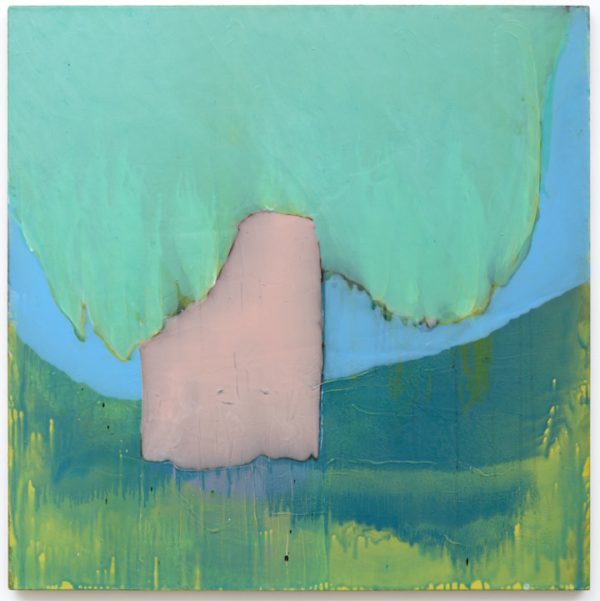Your cart is currently empty!
Nancy Evans

Curated by critic Michael Duncan, this 15-year survey consisting of 40 mixed media works, paintings, textiles and sculptures was evocatively entitled “Tree. Lingam. Void.” The exhibition offered an in-depth look into the artist’s ongoing exploration of the collective unconscious and shared universal symbologies as expressed in the archaic, folk and non-Western arts, and early Modernism. Many of the paintings recall the earthen-colored abstractions of Arthur Dove in their use of simplified radial and circular forms that suggest underlying spiritual currents in natural phenomena. A series of airbrushed works on textured paper are likewise reminiscent of the richly colored, emblematic forms of Marsden Hartley.
Like these visionary Modernists, Evans seems to have embraced the idea that natural subjects can inspire spiritual or mystical significance, from the diverse creation stories to the quietly meditative to consciousness-altering states. References to ancient Hindu motifs and sculptural forms such as the procreative lingam in the smaller paintings on paper seem to synchronize most with her sculptures—fantastically imaginative bronze and resin figures cast from assemblages of found natural materials such as leaves, twigs, ripe seed heads, dried flowers, twigs and branches she collects in the environs of her Venice home. Totemic, cross-cultural, boundary defying, they are often based on Gods/Goddesses such as Shiva, Kali, and Shakti or on mythological archetypes, fertility figures or ancient ritualistic pieces.

Allusions to elongated African statuary and pre-historic fetishes abound, with nods to Brancusi and Picasso, who were well known for such influences. In a constant interplay between the animal, vegetable and human realms, the cultural and the natural are blended: tree trunk torsos, mermaids, rearing cobra heads, bird/animal/human hybrids and diminutive elfin creatures are endowed with life-like limbs, heads and torsos that uncannily flop, fold, crease and droop like the plants from which they are derived. Most are placed on simple wooden platforms, some provided with additional elements such as mirrors which prompt and include self-reflection while gazing on the artworks.
Resolutely untechnological, these sculptures and paintings are metaphorical and redolent of preverbal times when human-made objects expressed a magical relationship and interdependence with nature, what Levi-Strauss described as “below the threshold of thought.” While dependence on technology, scientism and globalism has suppressed and erased such traces of the “primitive,” the pre-modern, the spiritual and the magical, and postmodernist theory has questioned the existence of universal values, Evans cherishes and reimagines the human commonalities within all traditions and temporalities. The convergences with early Modernism, ubiquitous in her work, are not a matter of appropriation or stylistic convenience but part of her deep conversation with the past: her entire body of work affirms an appreciation for the vital importance of the erotic, the non-human, the mysterious and the sacred—feeling the “dancing puppets deep in the interior life” as ecologist and philosopher Timothy Morton has written. Something to ponder while dealing with the complex issues confronting the planet today.